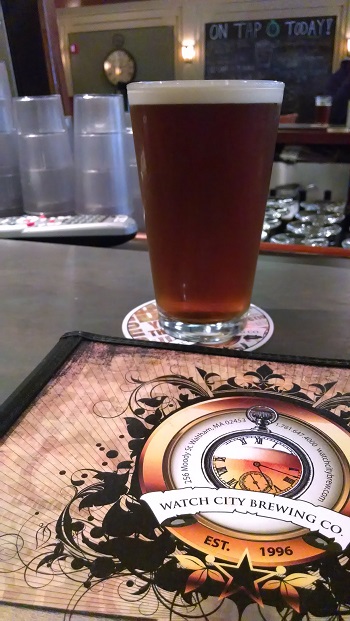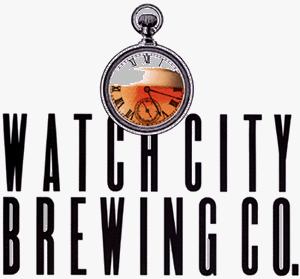"It's the Same Old Shillelagh"

Brewery and Country of Origin: Watch City Brewing Company of 256 Moody Street, Waltham, MA 02453, USA
Date Reviewed: 11-26-13
Ok, we know it's only two days before beautiful Thanksgiving, and it was exactly one year ago that we reviewed a beer which reminded us of the trials and tribulations of Black Friday. But as you are all probably aware, we're huge fans of St. Paddy's Day. So rather than go on about people getting turkey induced food comas, crazy shoppers shooting strangers for XBox Ones or PS4s, or eternal holiday traffic, we're here to bring you some history of the lovely Shillelagh. It's a fun word to say, and in Gaelic, it means "Descendants of Ealach." In the 1800s, the word became associated with a type of prized walking stick made of blackthorn (a fruit bearing tree, or the misspelling of a resort in the Catskills) and used for settling disputes. How? Well, colonial America had the pistol, 19th century Japan had the katana, and Ireland had the Shillelagh, used to strike people with force. Somehow, this was seen as a "gentlemanly" way of resolving conflict (instead of a fist fight, a discussion over a few pints, or an MOU). Either way, shillelagh fighting (the use of a heavy stick to hit people in physical conflict) has been in practice for thousands of years according to historians. There are three typical lengths quite vague in description (one that was long (the length of a normal walking stick), one about half that size, and a short one about a foot in length). At the end of the stick was a heavy wooden knob which was used to make a strike in a similar fashion to a mallet(this was sometimes weighted with lead to increase inflicted damage). Normal shillelaghs weighed about two pounds. Since their widespread usage in the 19th century, shillelaghs have become associated with Ireland and Irish Folklore. There are many references to the stick in modern culture, particularly in both sports and the military. The logo of the Boston Celtics, as well as many logos for rugby teams across Ireland and Australia, feature leprechauns with shillelaghs. Martin Marietta (predecessor to defense contractor Lockheed Martin) named their 1960s anit-tank missile after the stick. The US Army's 69th Infantry Regiment from New York carries shillelaghs as rank badges in parades. And officers of the Irish Guards of Northern Ireland are issued shillelaghs as standard (traditional). They are also given out as awards or ceremonial gifts. And while all of this seems quite sophisticated, we think we'd still prefer to settle our differences over a pint, rather than a concussion.
Date Sampled: 9-20-13 At: Watch City Brewing Company Brewpub, 256 Moody Street, Waltham, MA 02453, USA
Beer Style: American Irish Red Ale
Alcohol by Volume: 4.80%
Serving Type: Brewery Nitro Keg, 16 oz Tumbler Glass
Rating: 3.65
 Shillelagh Irish Red Nitro Ale
Shillelagh Irish Red Nitro Ale




